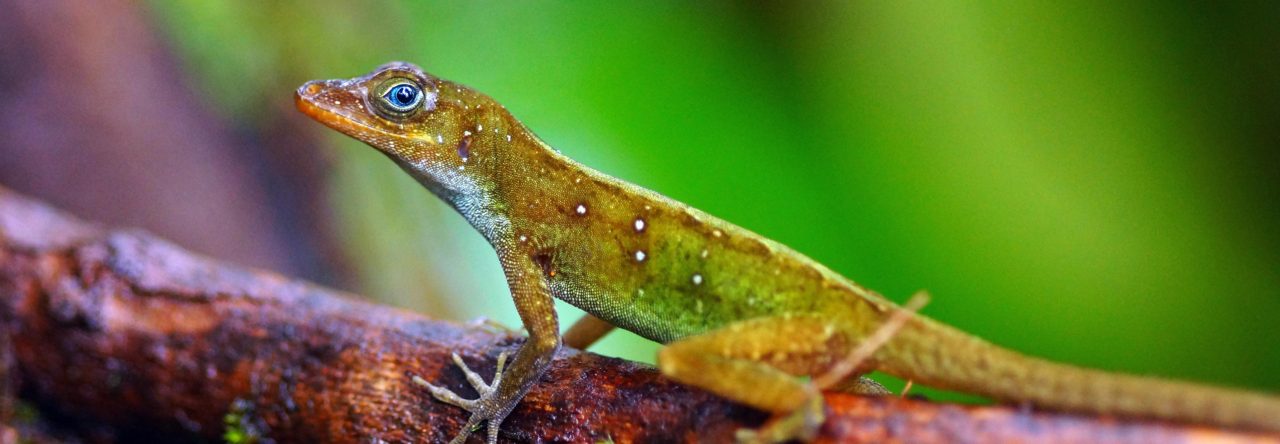
Something you don’t see every day: a green anole on a pine tree.
Through the years here at AA, we’ve had discussion of the habitat use of the common green anole. In particular, there is a persistent belief that before the brown anole emigrated from Cuba, green anoles used all manner of anole habitat, from the bottom of trees to the very top of the canopy. Once the browns arrived, however, greens seem to have repeated back up the tree, ceding the low perches to the browns.
This is a very nice story, and probably true, but it’s surprising how little documentation we have of the habitat use of green anoles in places where browns don’t occur. In fact, more generally, it is quite surprising just how little we know about the natural history of green anoles throughout their natural range. For such a common species, you’d think its biology would be extremely well-known, but that is far from the case.
A while back, Janson Jones referred to the green anoles in his then-neighborhood (he’s since moved) in Georgia as low-riders, a possible example of green anole habitat use in the absence of browns. With this in mind, I was delighted to get a chance to see what the greens are up to in Alabama, a state that is still mostly–at least for now–mostly brown anole free.

Across the street from Pi Kappa Kappa.
On the campus of the University of Alabam in Tuscaloosa, greens were moderately abundant when the sun was out. The fellow to the right was strutting his stuff on sorority row, but his comrades elsewhere were in similar habitats on trees, moving up to into the canopy when harassed by an old dude with an iPhone.
But then I had the good fortune to get taken to a nearby pine forest by whiptail lizard geneticist turned turtle biologist Peter Scott, a grad student at UA. Peter told me that he often saw (or, rather, heard) green anoles scurrying through the leaf litter when he approached, running to the nearest tree which it then ascended. It seemed unlikely, but sure enough, that’s where the greens we found were, down low, in very un-green anole-like habitat.

Alabama low-ridin’ green anole
Of course, these were just a few observations made over the course of a short hike one afternoon. But clearly there’s a lot to learn about green anoles–what they do in places without competitors, and how that changes when brown anoles arrive. Seems like a great project out there, just waiting for someone to do it.










 A few months back, we
A few months back, we 



